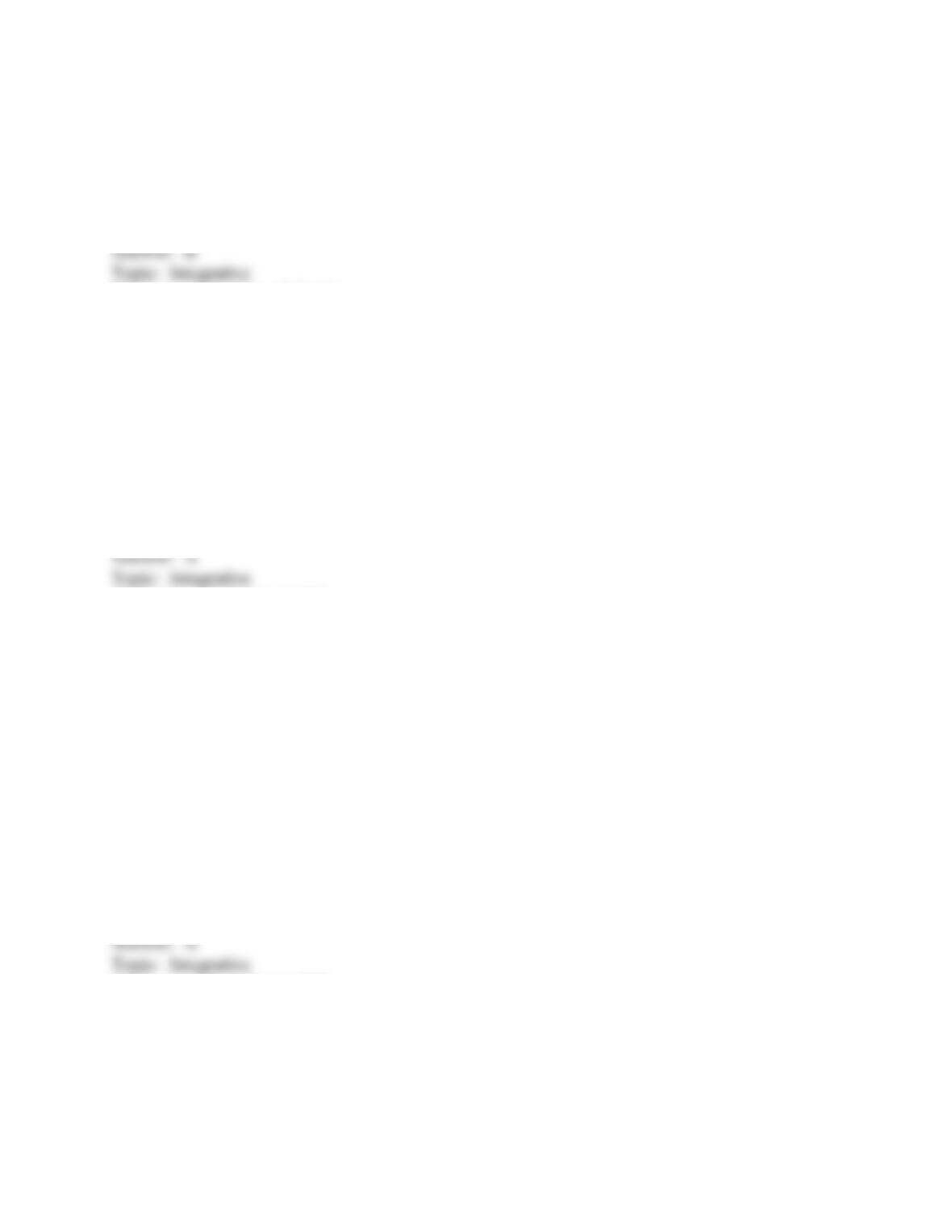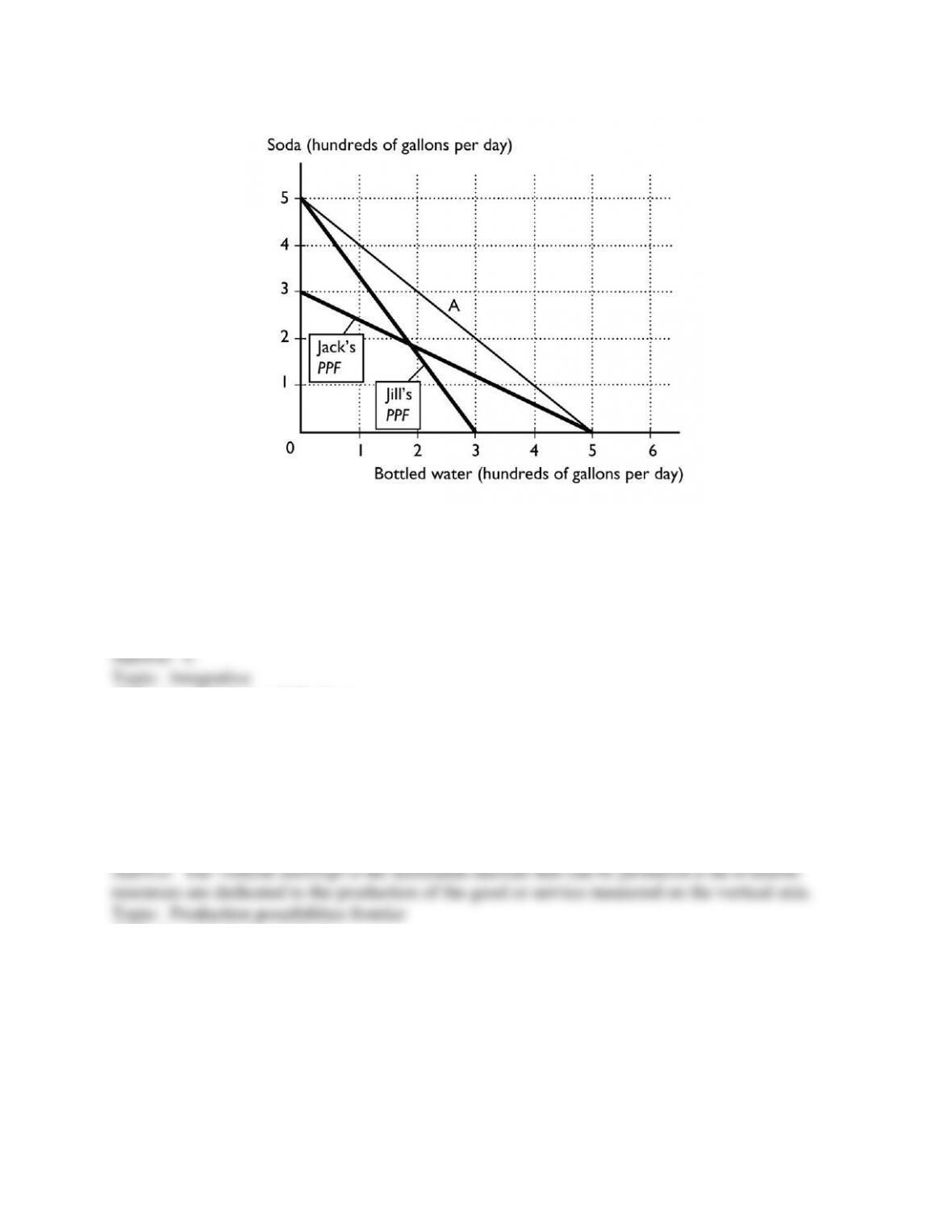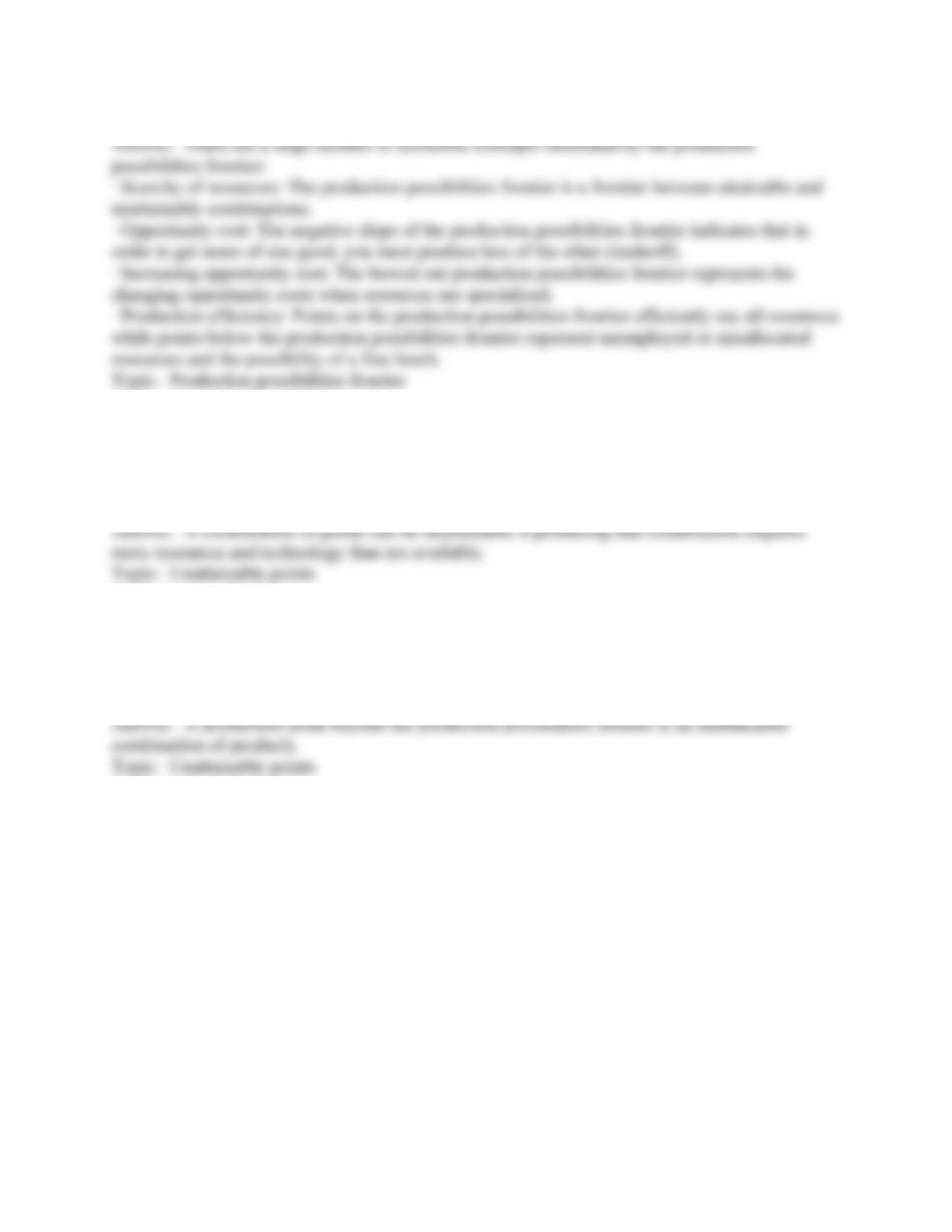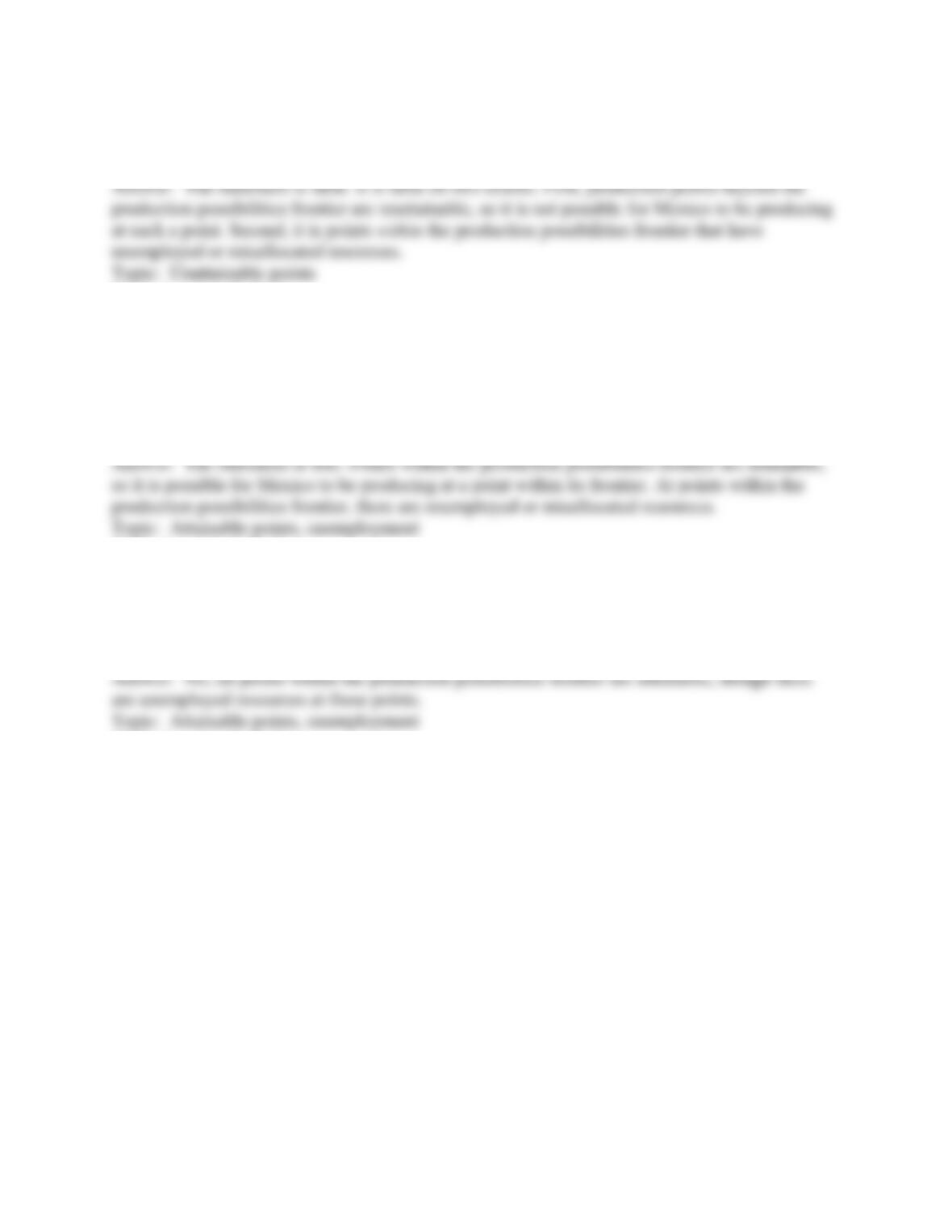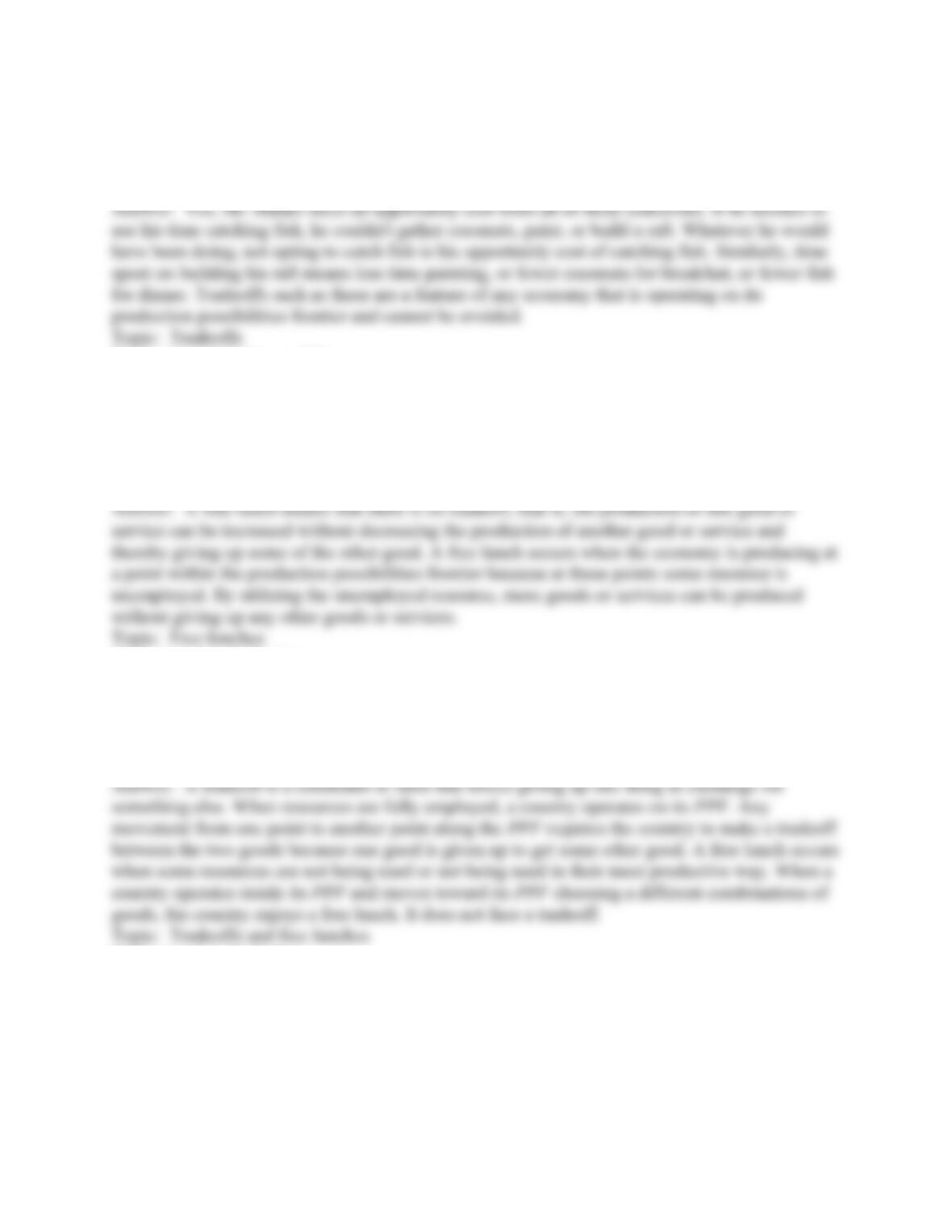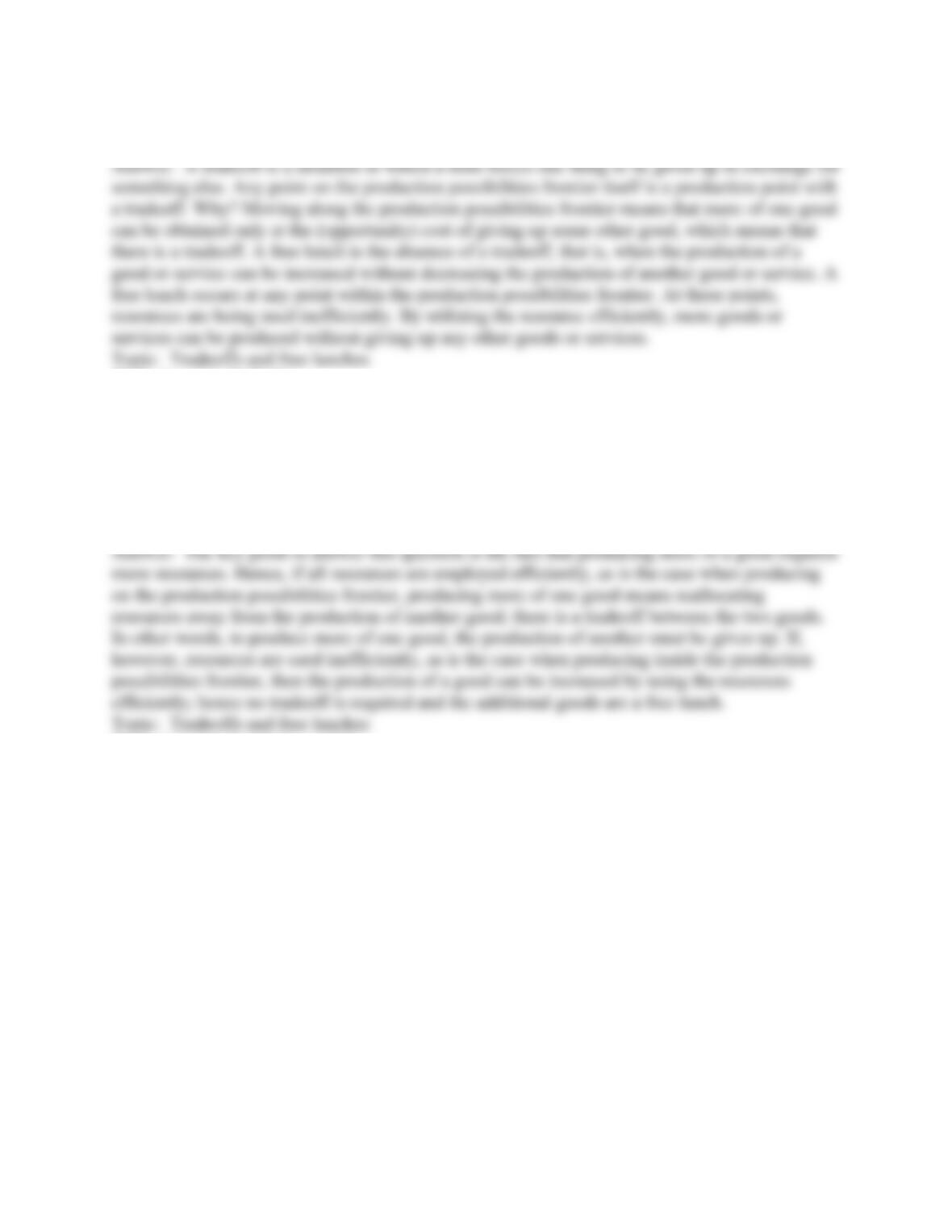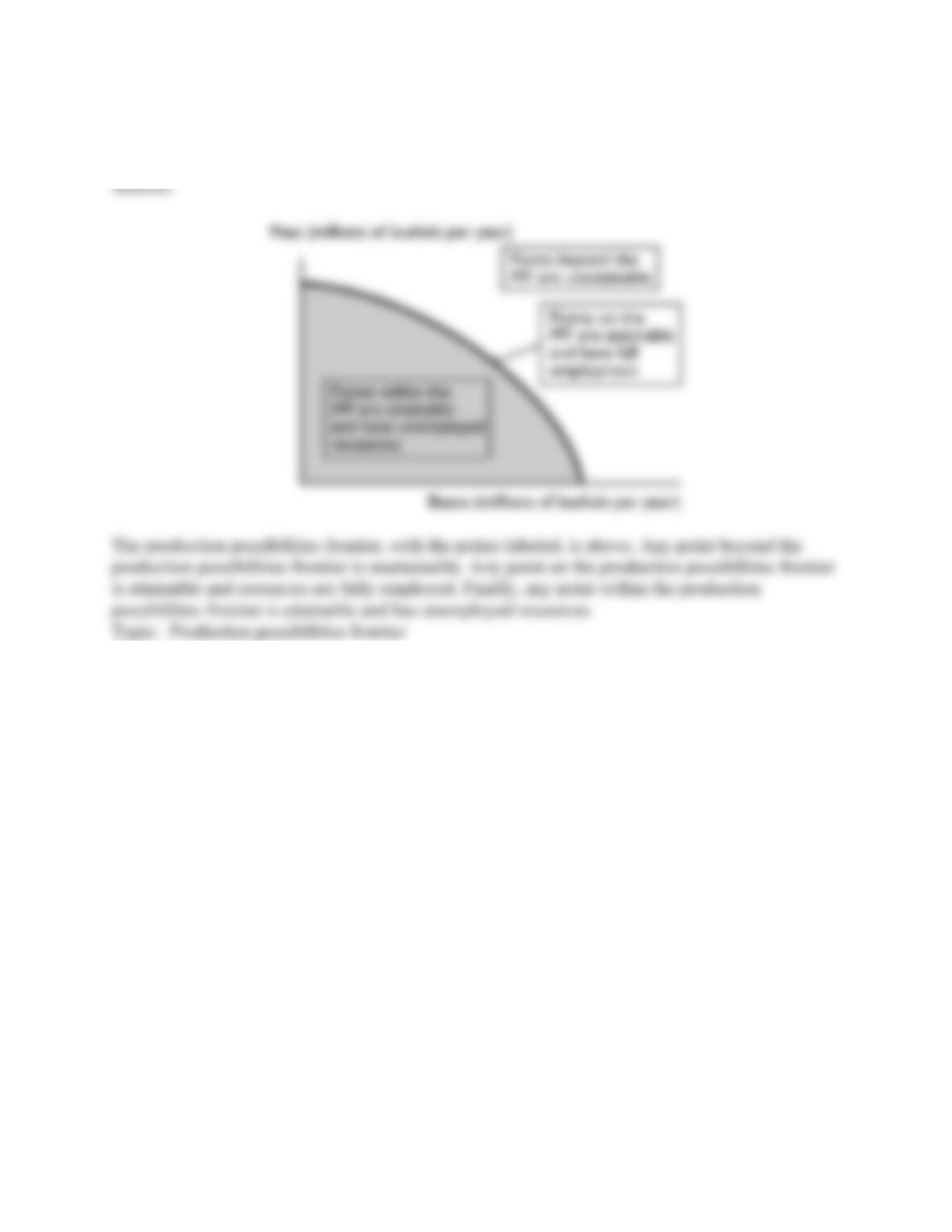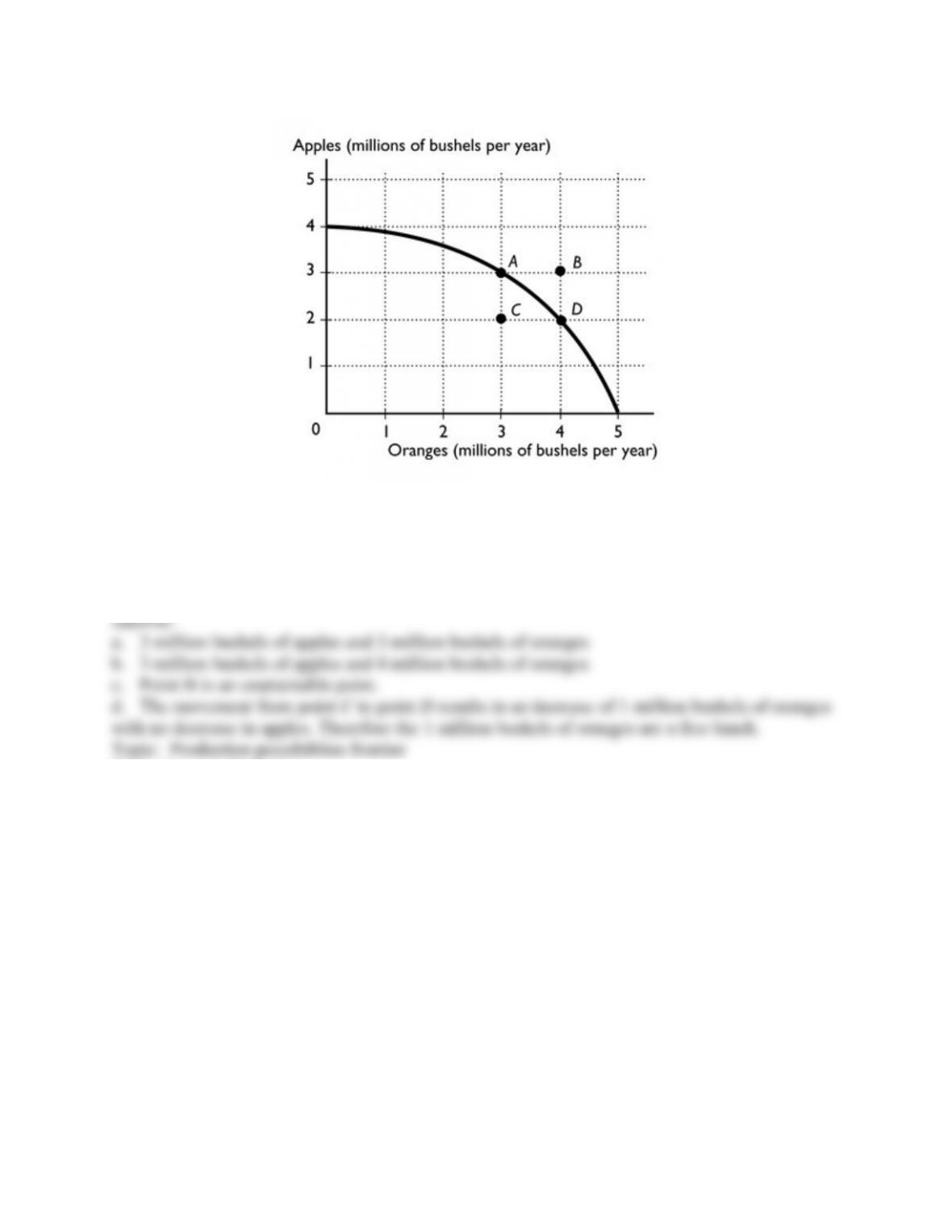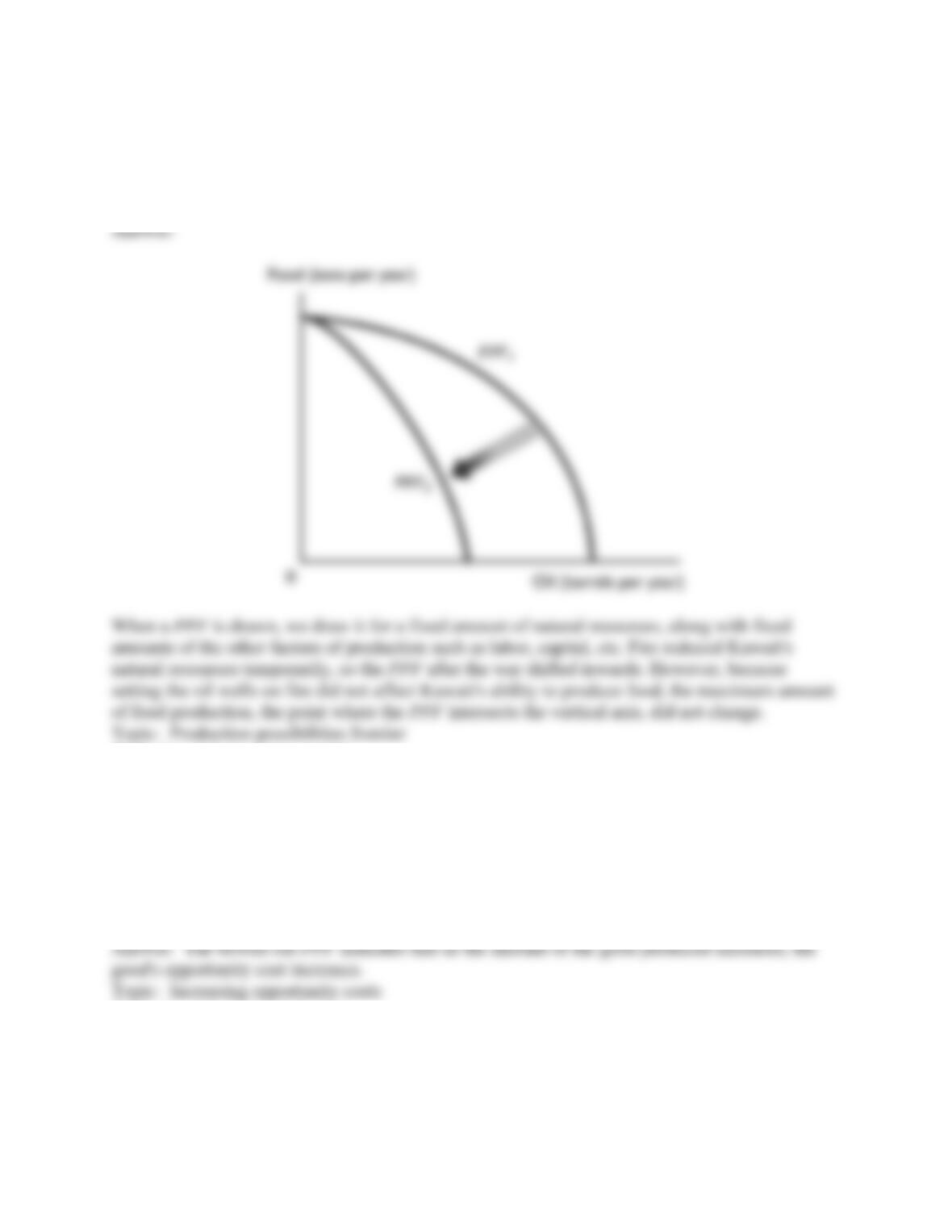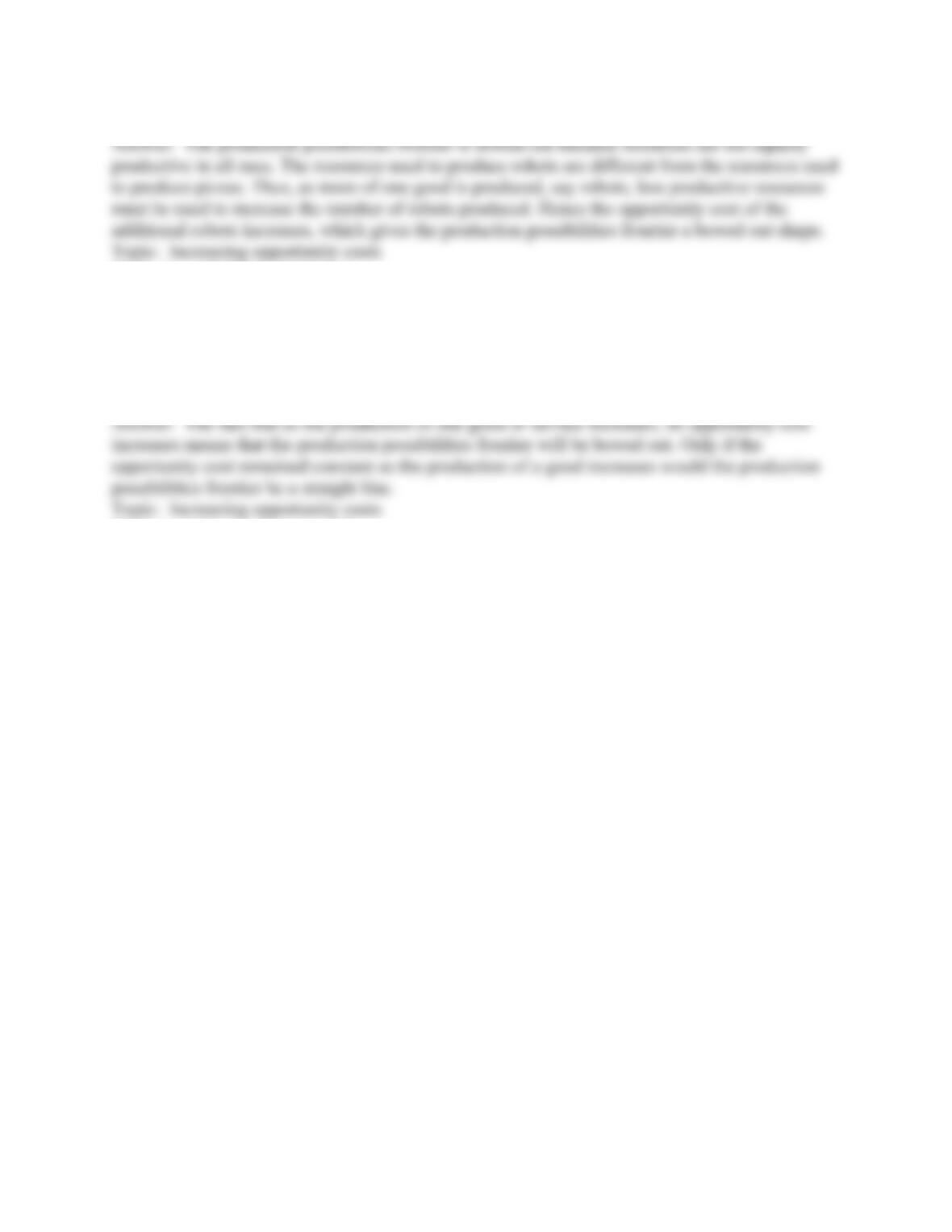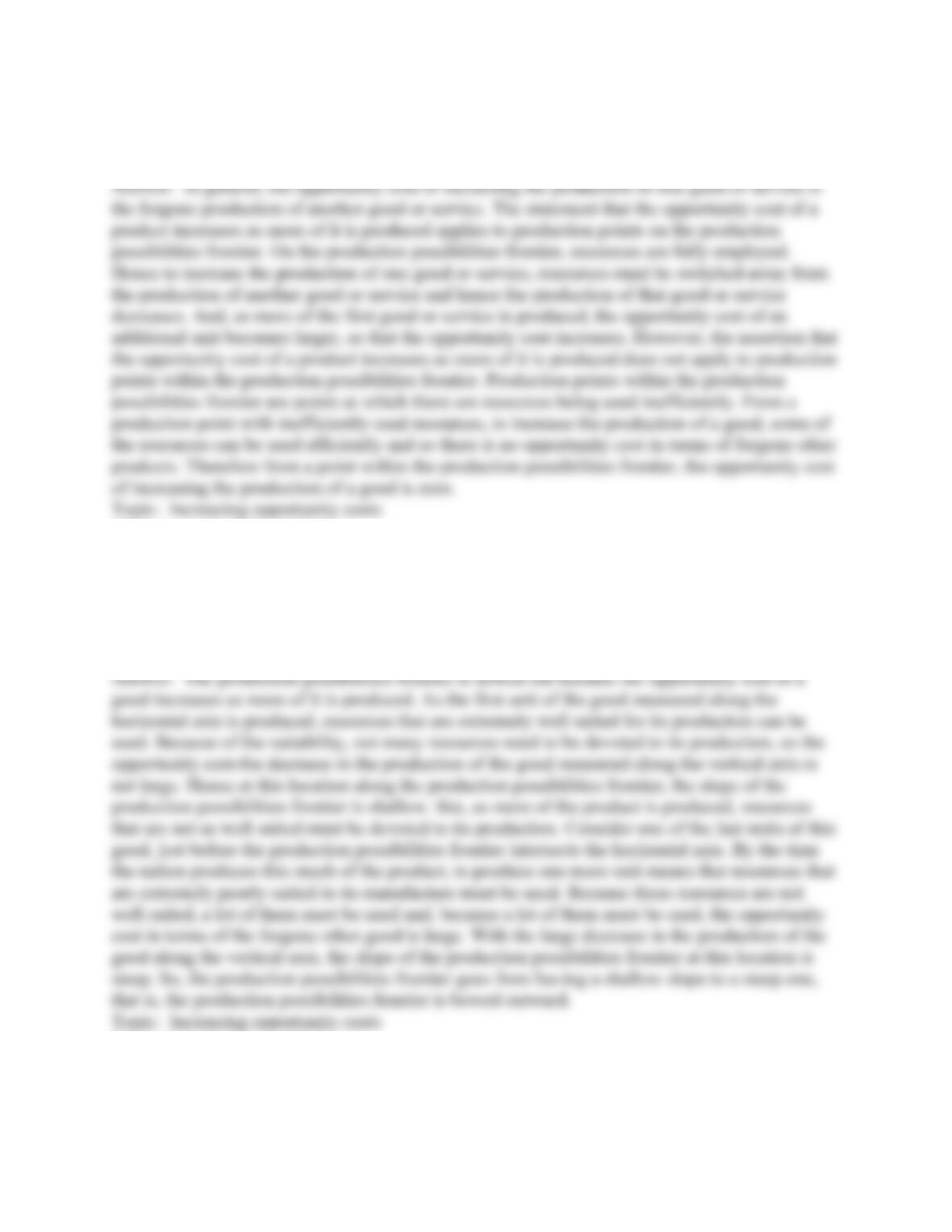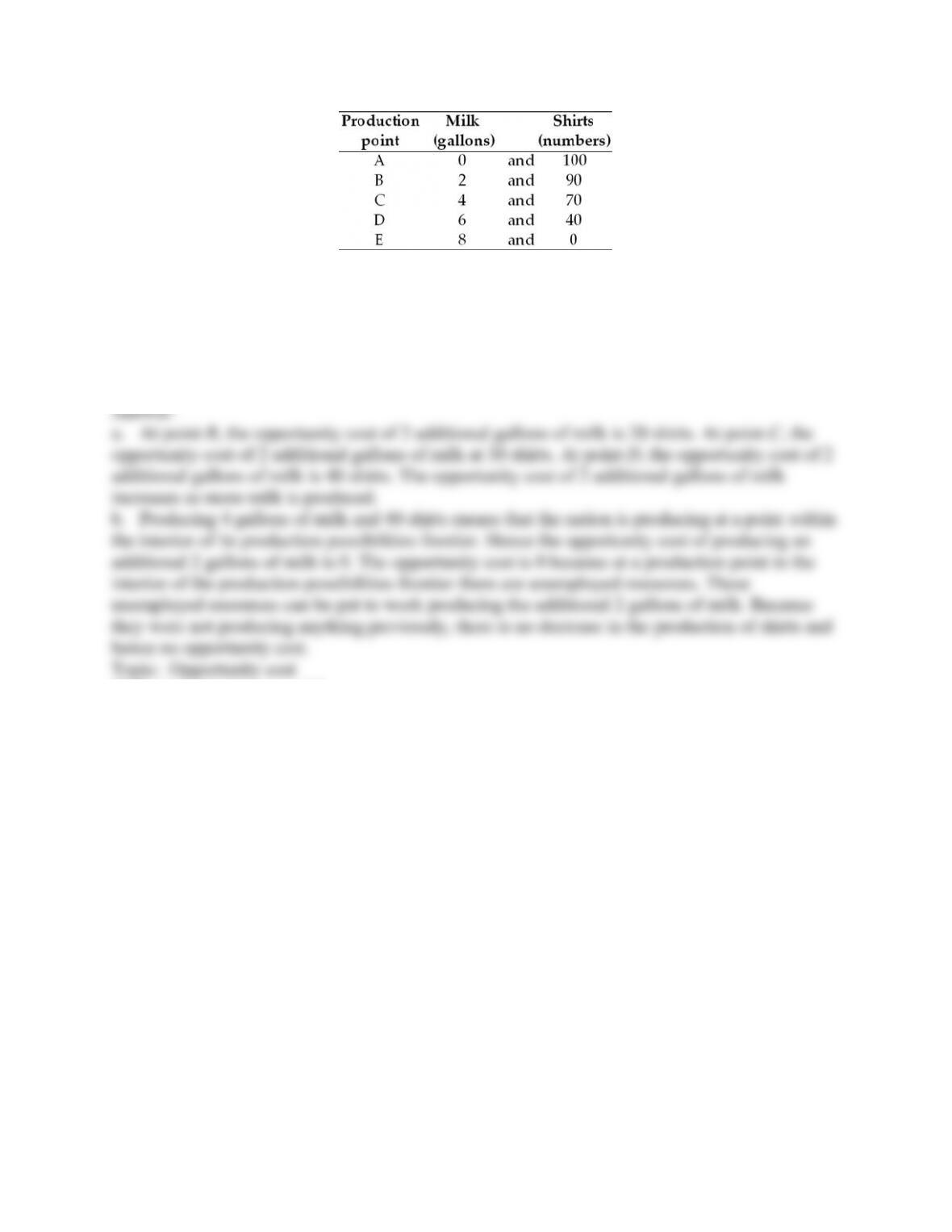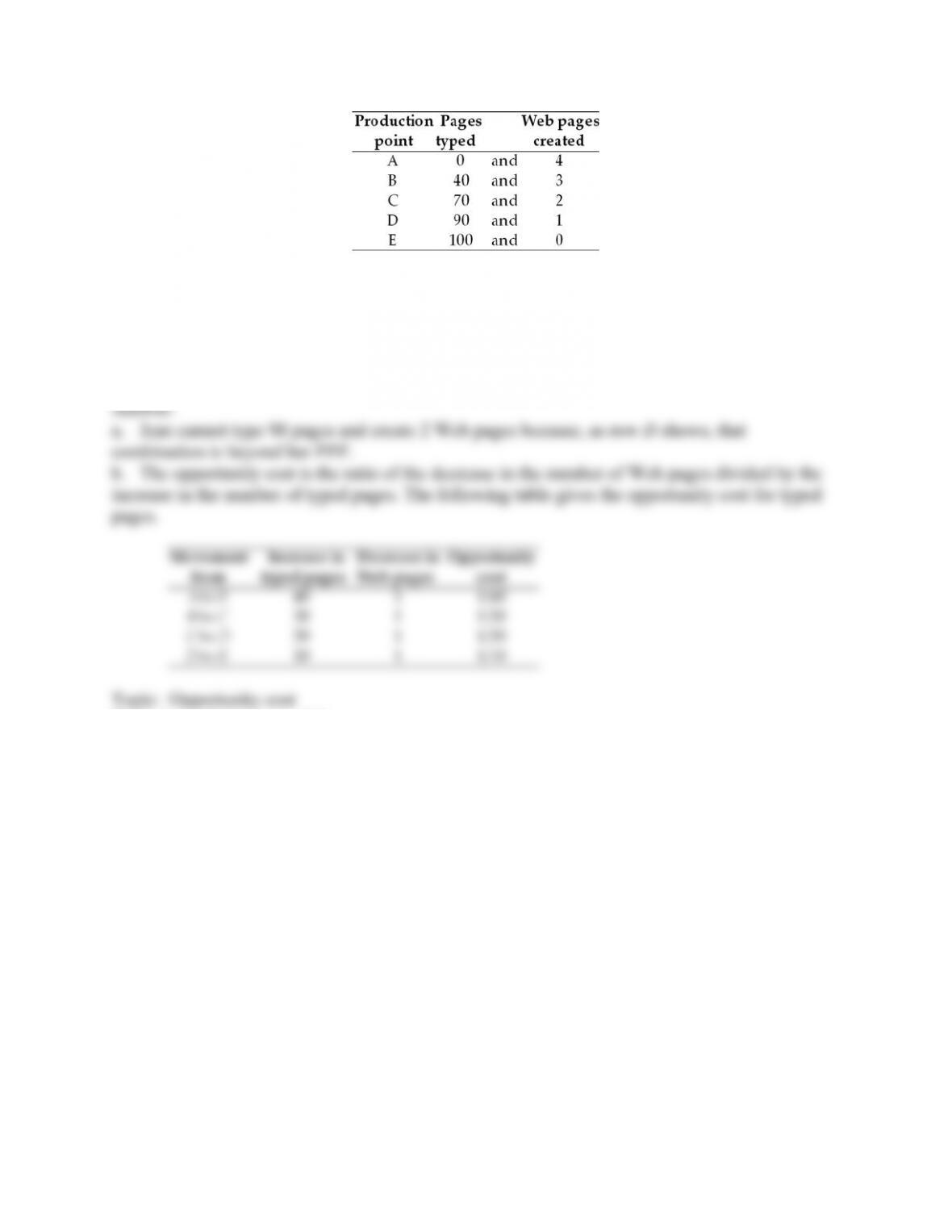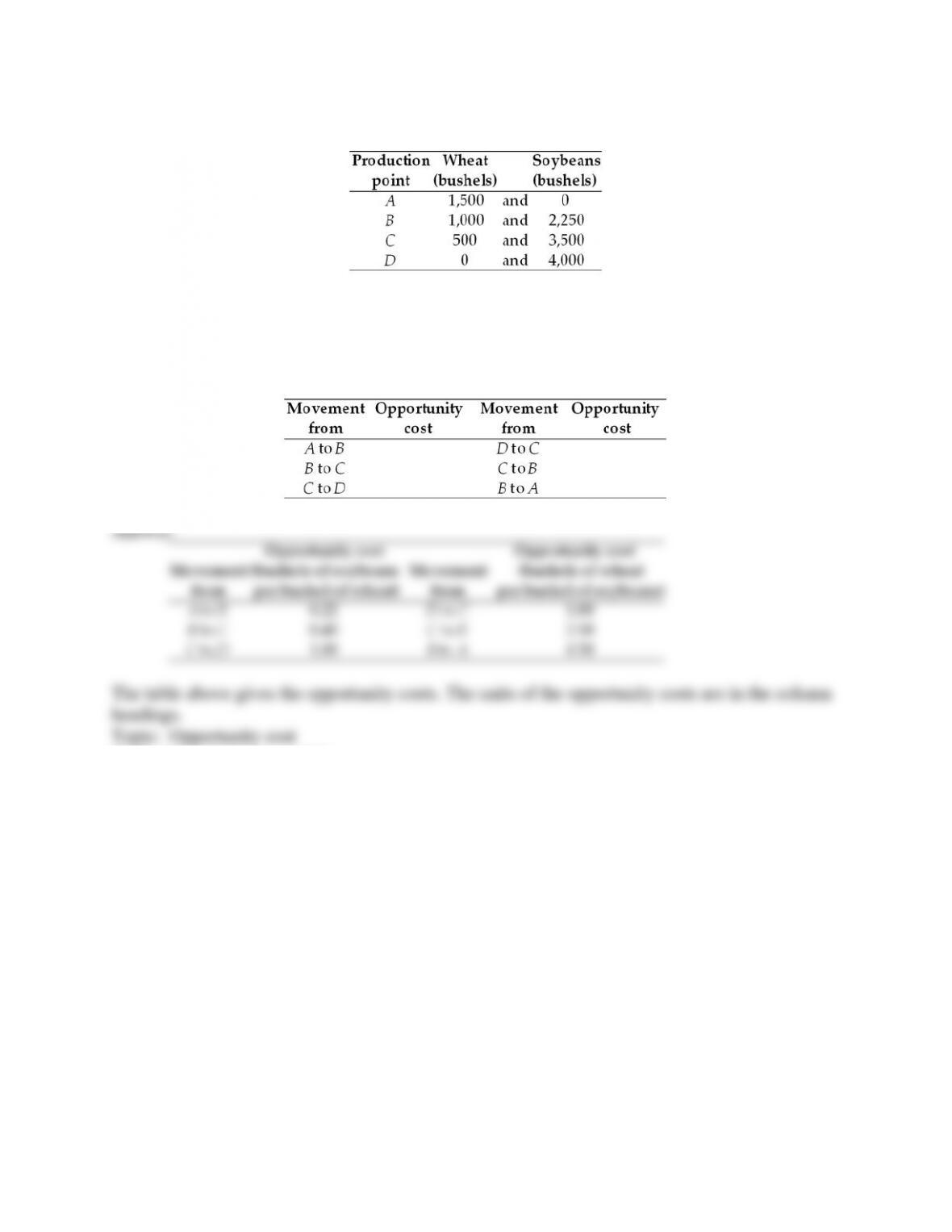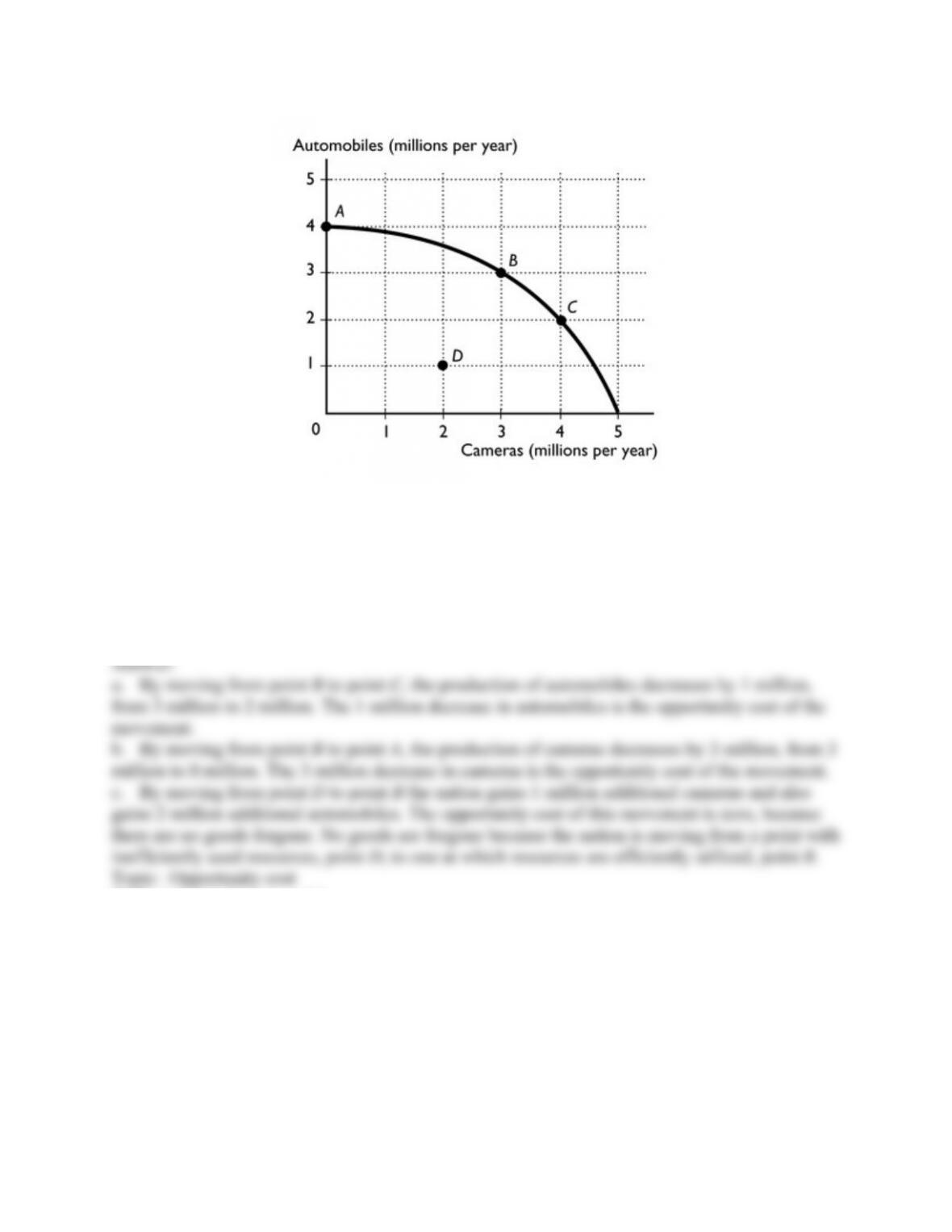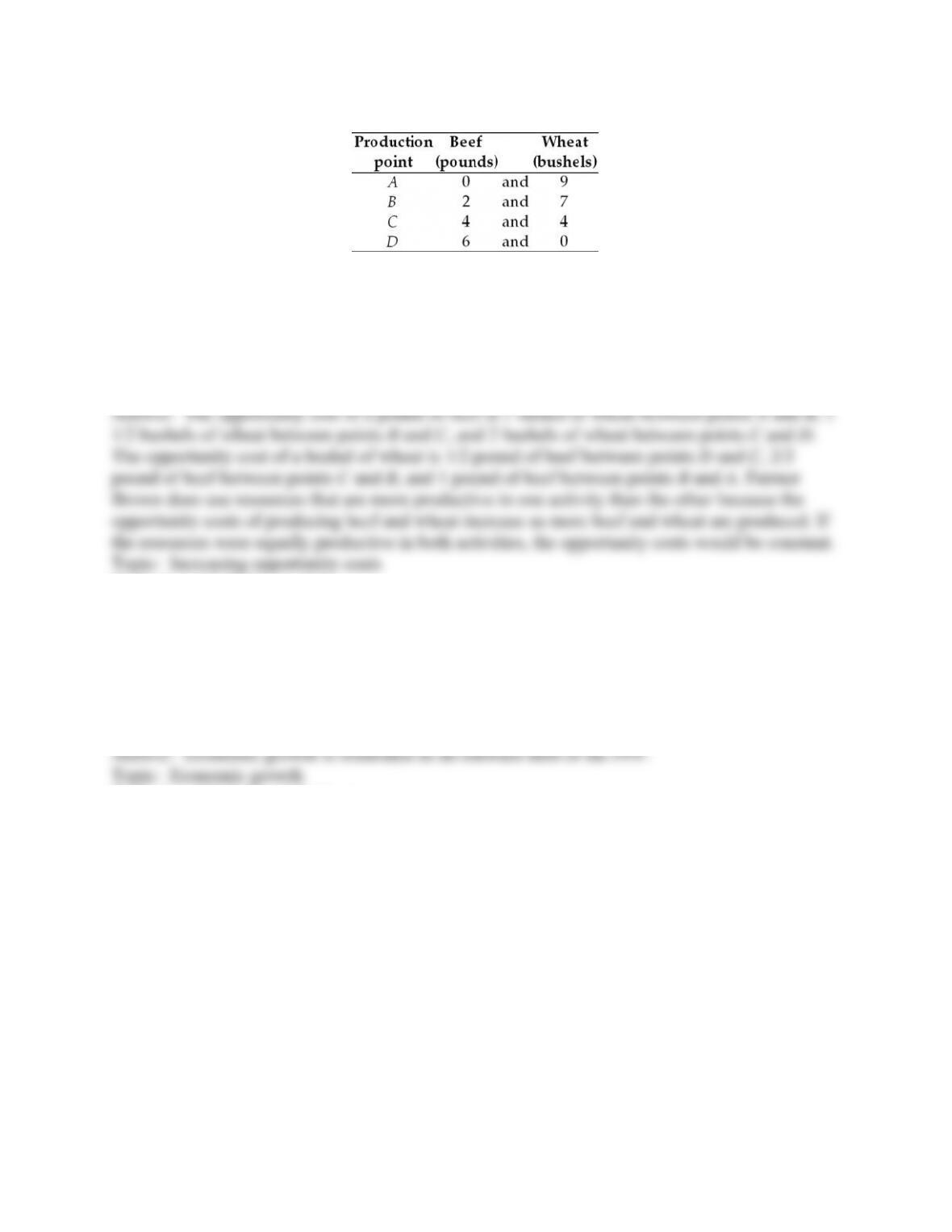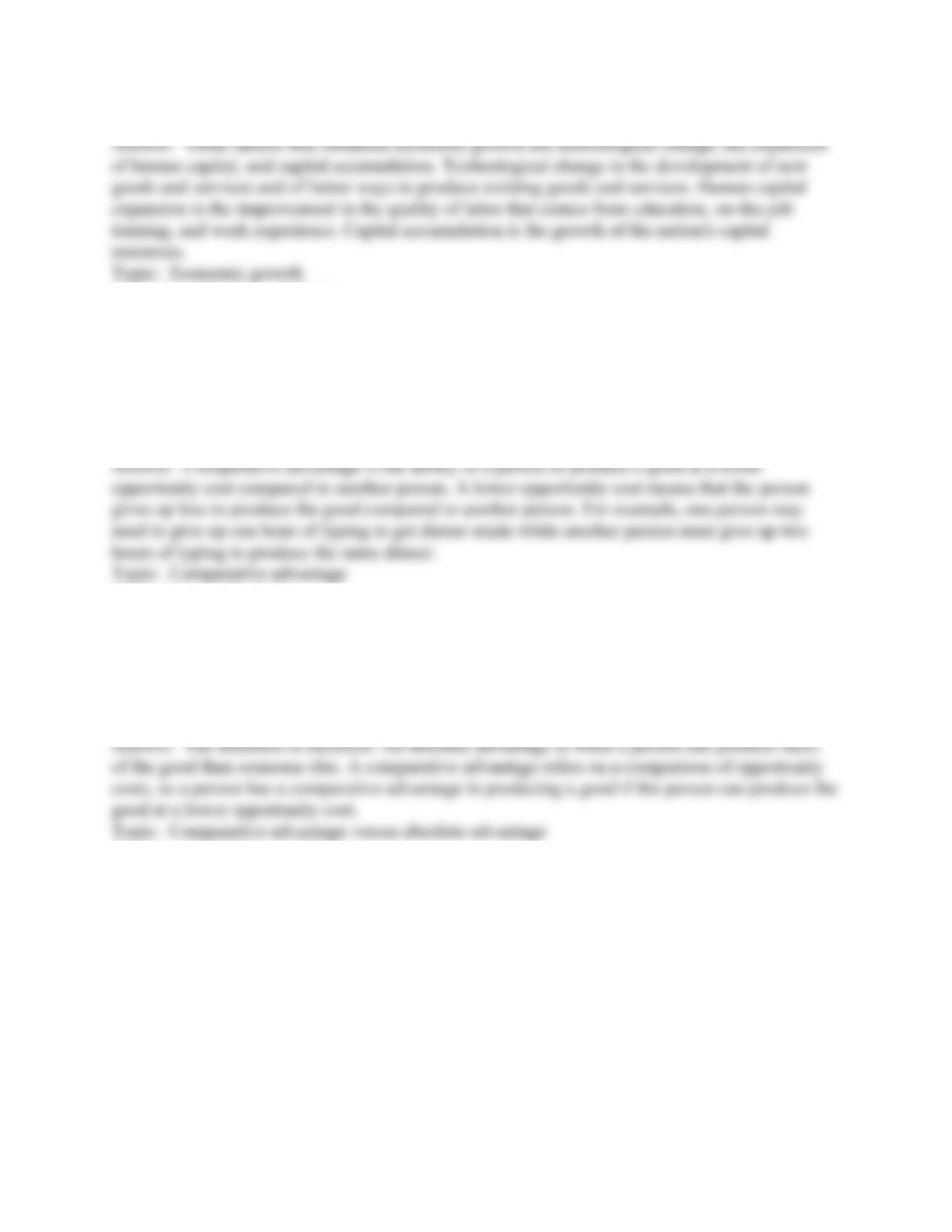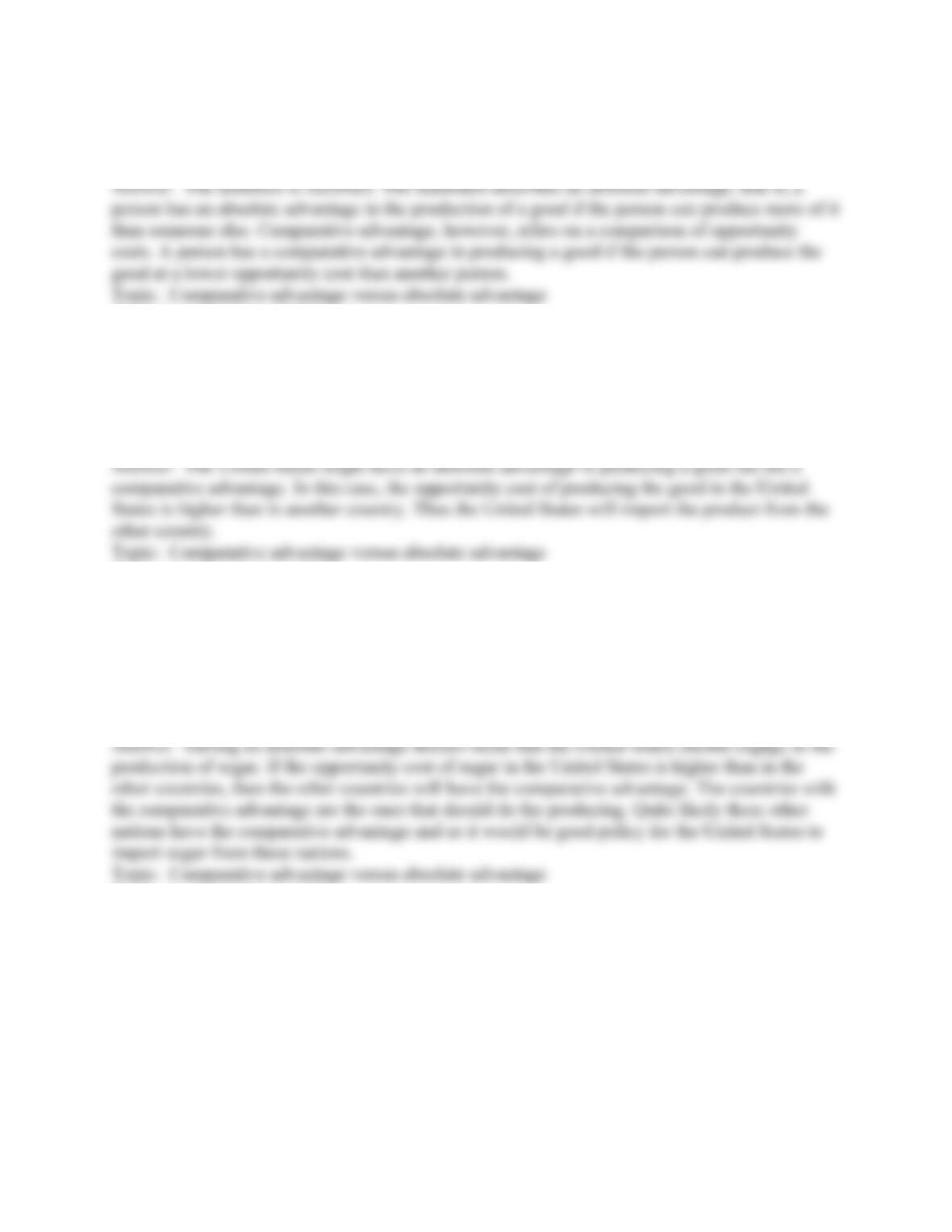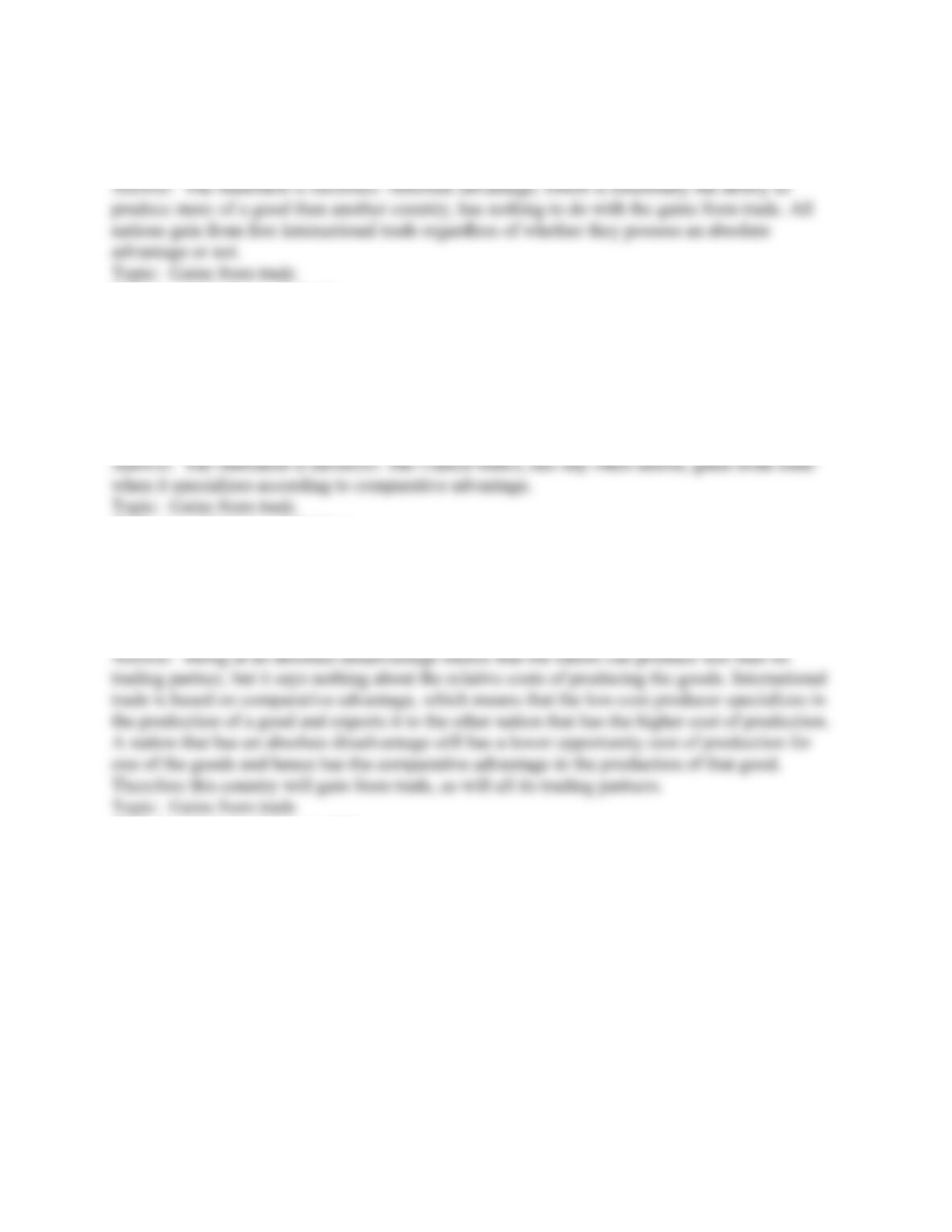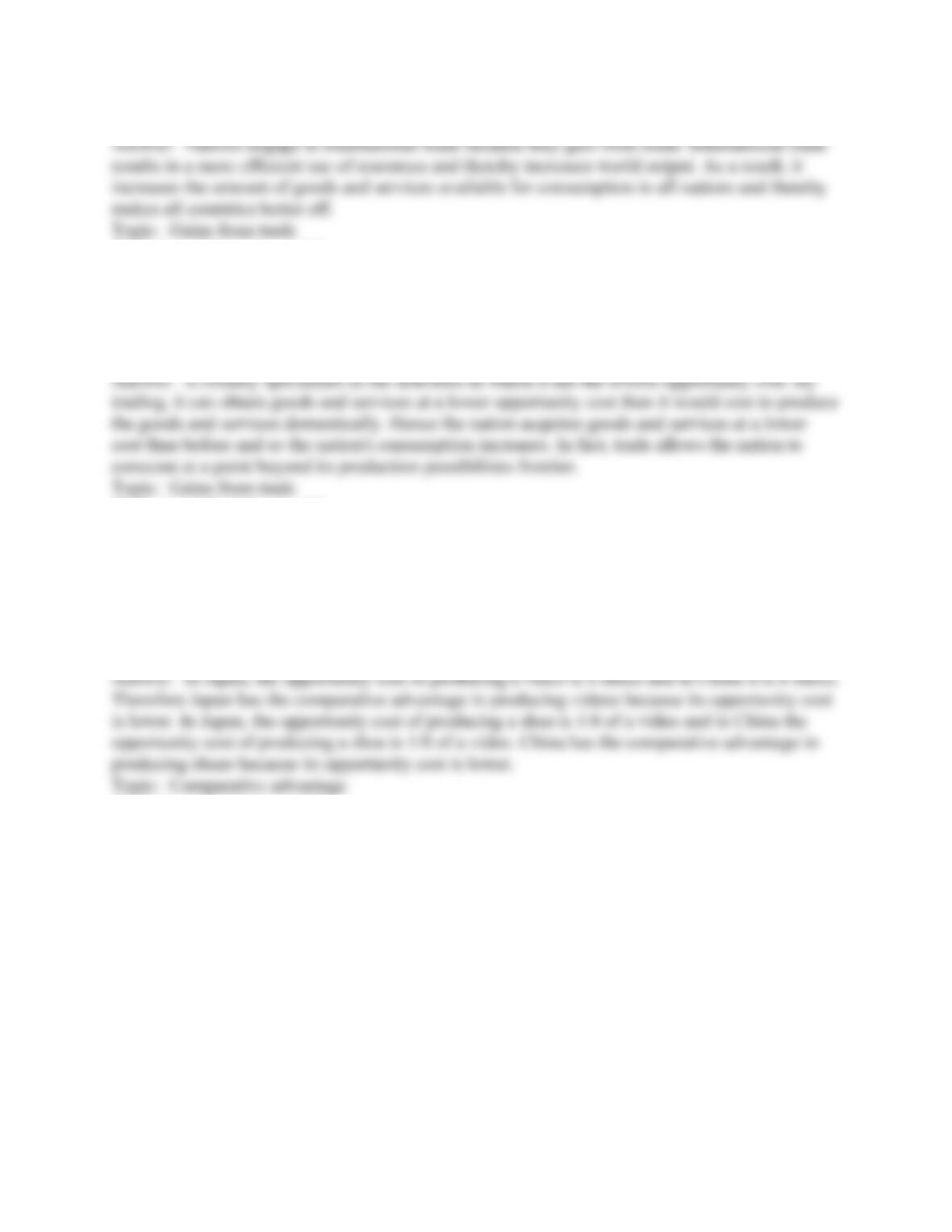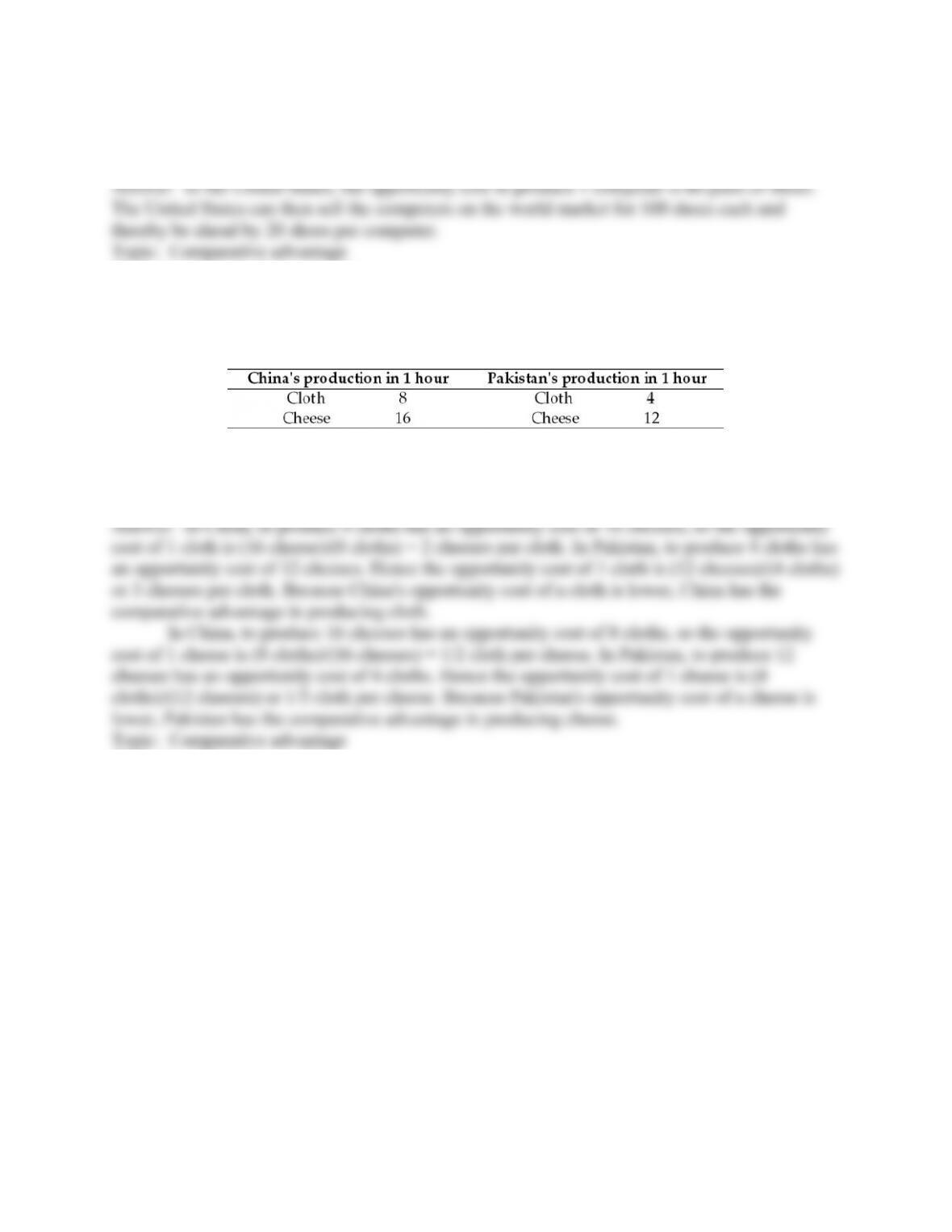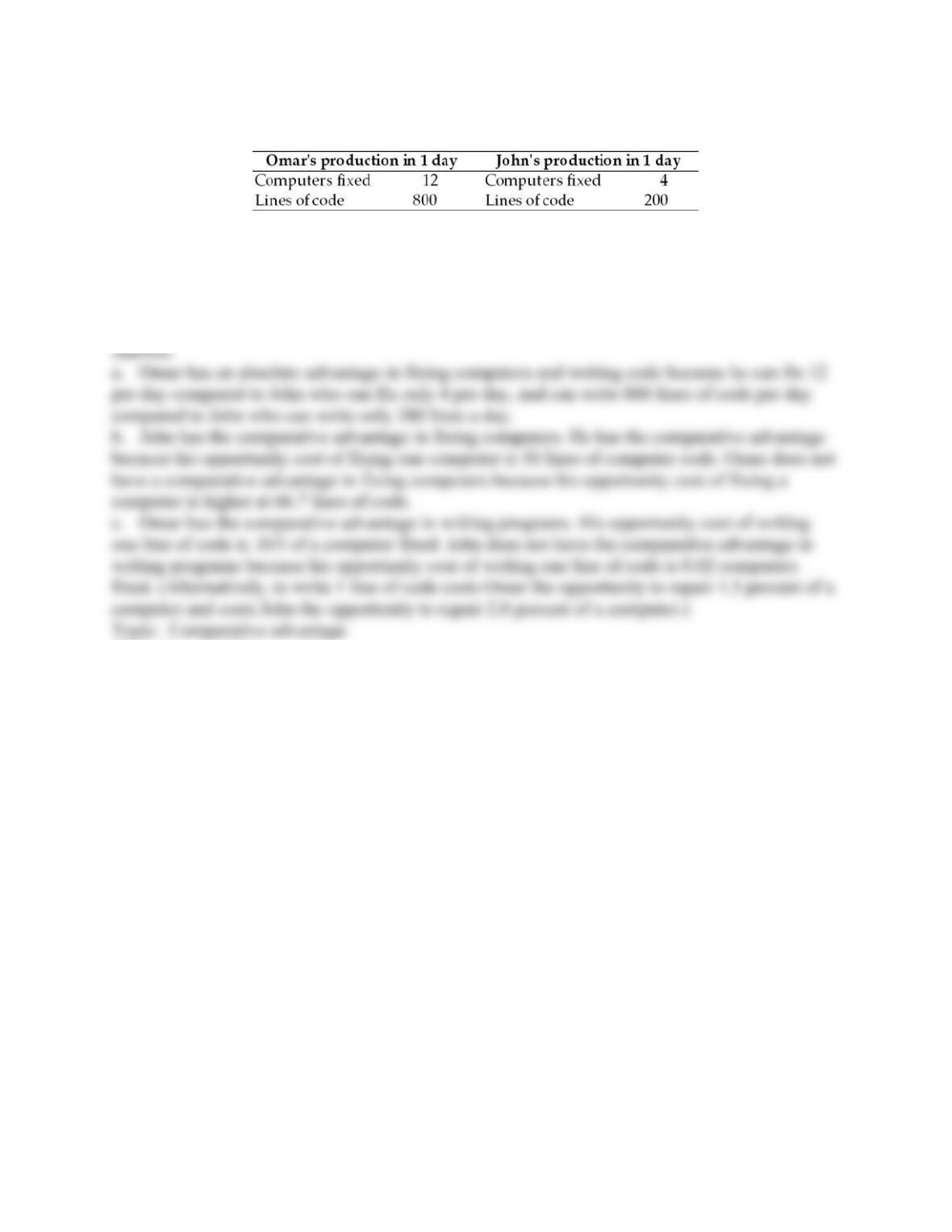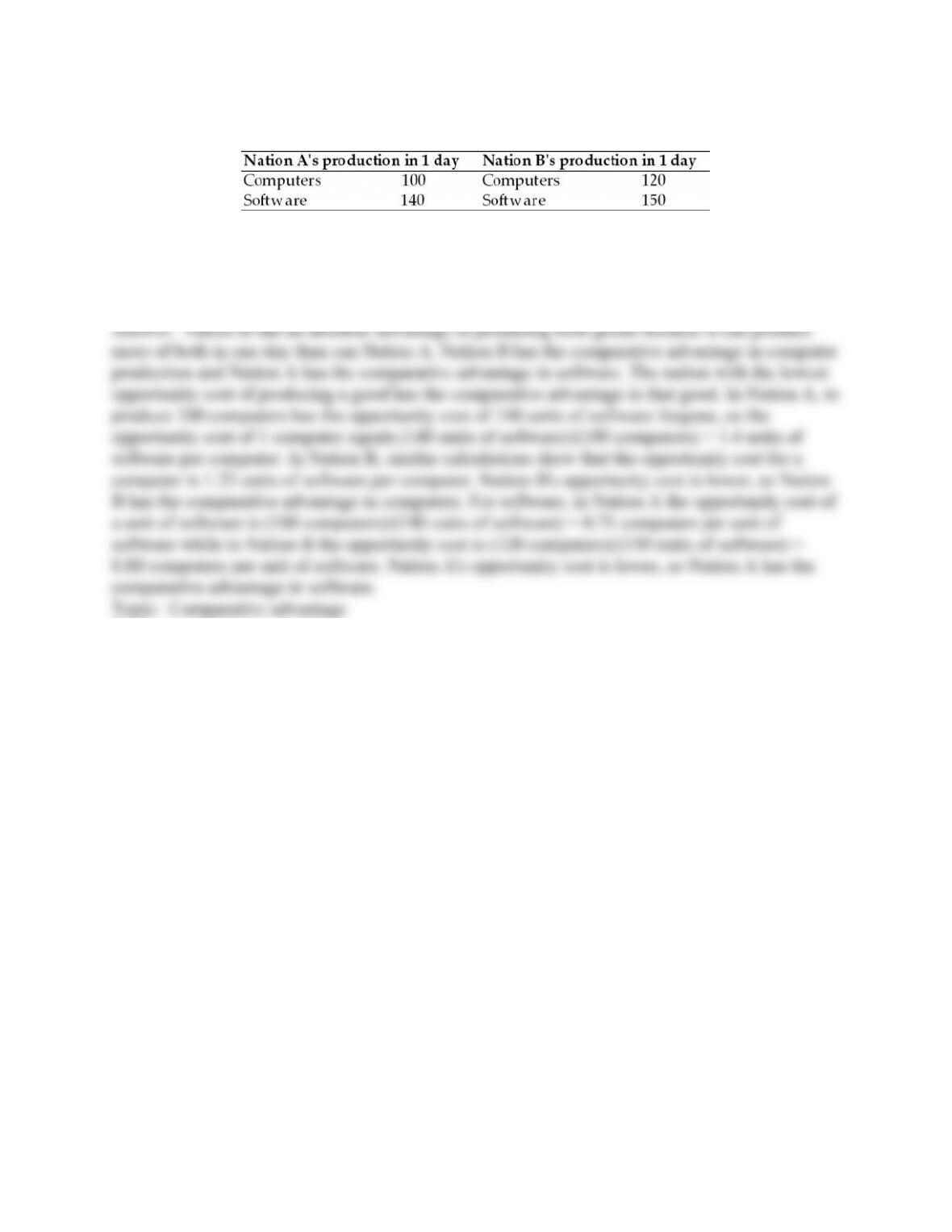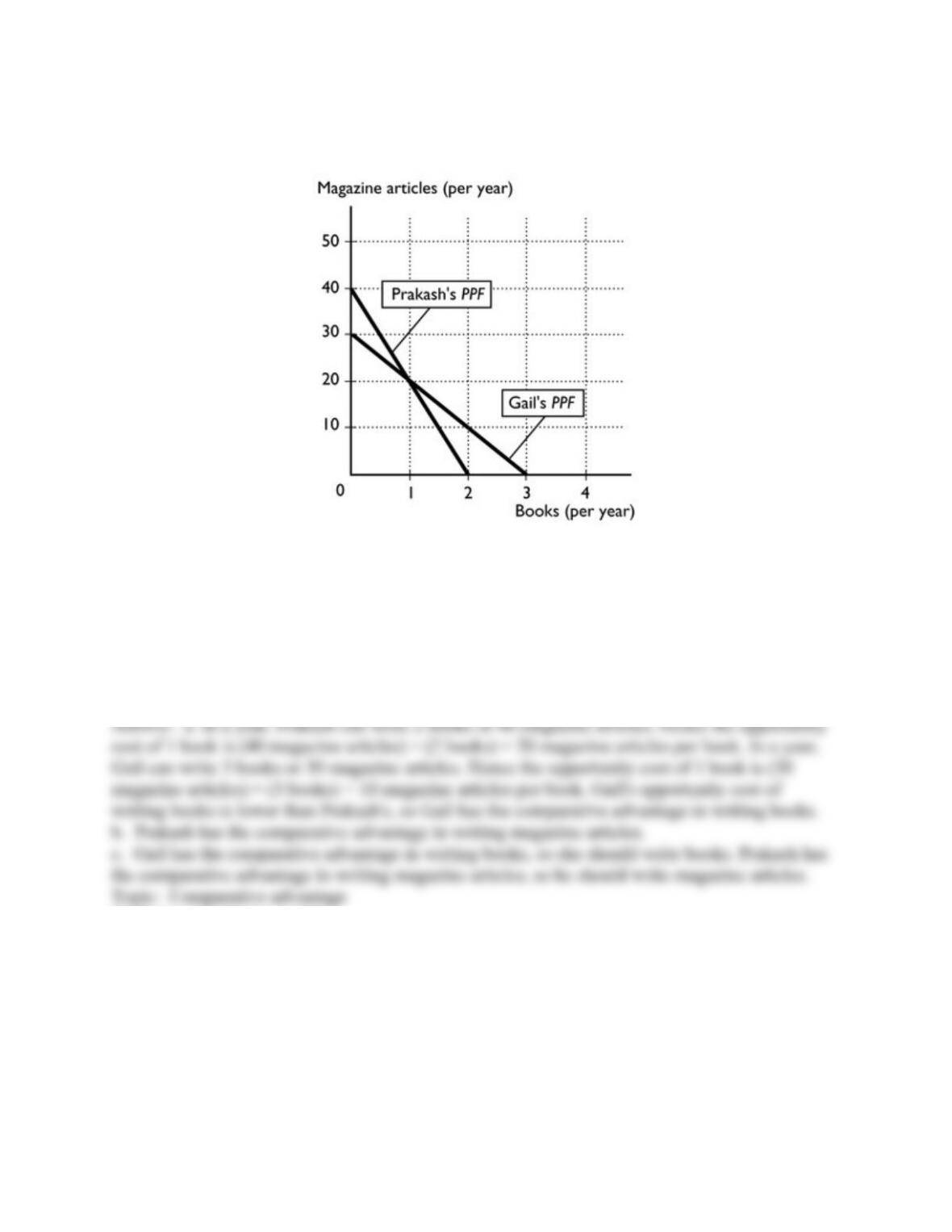89
Copyright © 2011 Pearson Education, Inc.
14) Using the figure above, suppose with no trade Liz and Joe each produce at point A on their
respective PPFs. Then, Liz suggests that they specialize and trade. She would produces only
smoothies and Joe would produce only salads. Then she would sell 10 smoothies to Joe at a
price of 2.5 salads per smoothie. In this scenario,
A) Liz gains 10 smoothies and 5 salads, and Joe gains 5 smoothies.
B) Liz gains 5 smoothies, and Joe gains 10 smoothies.
C) Liz gains 10 smoothies, and Joe loses 5 smoothies.
D) Liz gains 5 smoothies and 5 salads, and Joe loses 5 salads.
E) None of the individuals gain from trade.
Skill: Level 3: Using models
Section: Checkpoint 3.4
Author: SH
AACSB: Analytical reasoning
15) Using the figure above, suppose with no trade Liz and Joe each produce at point A on their
respective PPFs. Then, Joe suggests that they specialize and trade. He would produces only
salads and Liz would produce only smoothies. Then, Joe says, he would buy 16 smoothies from
Liz at a price of 1.5 salads per smoothie. Liz should
A) accept Joe's offer since she will gain 4 smoothies and 4 salads.
B) accept Joe's offer as she will be as well off as with no trade.
C) not accept Joe's offer as the price he offers is too low for her to gain from trade.
D) not accept Joe's offer since she would lose 2 smoothies and 2 salads.
E) accept Joe's offer since she will gain 4 salads.
Skill: Level 3: Using models
Section: Checkpoint 3.4
Author: SH
AACSB: Analytical reasoning
3.6 Integrative Questions
1) As technology advances,
A) all opportunity costs decrease.
B) the PPF shifts outward.
C) a country moves toward the midpoint along its PPF and can produce more of both goods.
D) all opportunity costs increase.
E) the PPF shifts inward because unemployment occurs.
Skill: Level 3: Using models
Section: Integrative
Author: CD
AACSB: Analytical reasoning

























































































